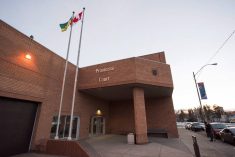Rural leaders say the Saskatchewan government’s decision to provide an education tax credit to property owners in each of the next two years fails to address the basic problem.
Neal Hardy, president of the Saskatchewan Association of Rural Municipalities, said the inequity in the property tax system, acknowledged by premier Lorne Calvert at the SARM convention last March, won’t be solved by an eight percent across-the-board tax credit.
SARM had argued that agricultural landowners should get the biggest share of any relief to make up for that inequity.
Read Also

Farm auctions evolve with the times
Times have changed. The number of live, on-farm auctions is seeing a drastic decline in recent years. Today’s younger farmers may actually never experience going to one.
“I think they’re making a mistake,” Hardy told reporters Jan. 6 after government relations minister Len Taylor announced the credit.
The Agricultural Producers Association of Saskatchewan agreed.
“During the past two decades, property taxes in rural Saskatchewan have risen by over 50 percent, while non-rural property taxes have gone up by only nine percent,” said president Terry Hildebrandt in a news release.
“Rural Saskatchewan cannot afford to continue to carry this burden.”
Making good on its promise to allocate 30 percent of one-time equalization dollars to education tax relief, the government will spend $55 million in 2005 and 2006.
Owners of residential, agricultural, multi-unit residential and commercial-industrial properties will see the credit on their tax notices. The average credit is eight percent and the cap on the latter two categories is $2,500.
The credits are calculated on assessed value, after percentages of value are applied.
According to examples provided by the province, a rancher with four sections of pasture worth $400,000, with an assessed value of $200,000, has an average school tax bill of $3,660. The rancher’s credit would be $300.
The credit on 20 sections of pasture, worth $2 million on the market and assessed at half that, would be worth $1,500.
The relief provided for a farmer with two cultivated sections would average $360, based on land worth $440,000 and assessed at $242,000, with an average school tax bill of $4,430.
Hardy said the credit is not as beneficial as the 2000-01 tax rebate program, which provided between 18 and 20 percent relief.
He hopes the government will address inequity in its upcoming budget. Taylor said only that cabinet is committed to finding a way to decrease the province’s dependency on property tax to fund kindergarten to Grade 12 education.
The $110 million cut moves government spending on education to 46 from 40 percent of the total. The remainder will still come from property tax.
School divisions will receive more money from the learning department to make up for the decreased tax revenue.















